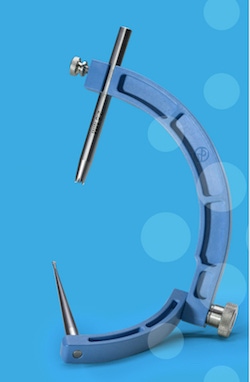August 8, 2017

 Once upon a time, white was the color of choice in the medical ecosystem. It connotes purity and sterility, qualities that mesh well with the expectations of medical care. In the early 1900s, “surgical green” gained popularity. There are several theories as to why, but the most logical reason is that green, which is the opposite of red on the color wheel, can help doctors see better in the operating room. Since physicians see an awful lot of red stuff during surgery, the mind gets numb to the hues, and begins to see a homogenous crimson tide. Looking at something green refreshes the eyes and restores visual nuances. Blue has similar properties. Things change, though, and today’s medical space is much more inclusive when it comes to colors, and that’s where Hueforia sees an unmet need.
Once upon a time, white was the color of choice in the medical ecosystem. It connotes purity and sterility, qualities that mesh well with the expectations of medical care. In the early 1900s, “surgical green” gained popularity. There are several theories as to why, but the most logical reason is that green, which is the opposite of red on the color wheel, can help doctors see better in the operating room. Since physicians see an awful lot of red stuff during surgery, the mind gets numb to the hues, and begins to see a homogenous crimson tide. Looking at something green refreshes the eyes and restores visual nuances. Blue has similar properties. Things change, though, and today’s medical space is much more inclusive when it comes to colors, and that’s where Hueforia sees an unmet need.
Thermoplastics compounder RTP Co. (Winona, MN) launched Hueforia, which it calls its color development team, to meld expertise in color design and materials. Hueforia consults across a range of sectors, but “medical is one of our largest markets,” noted Jeremy Cramer, Color Technical Specialist, who led a webinar today on the use of colored thermoplastics in medical devices.
Informed color selection can have a significant impact on patients and caregivers alike, noted Cramer. It has an emotional impact—think of the “dark blue surgical tool, which inspires confidence and competence,” he said. Color can also improve functionality by “making a lightweight device appear more sturdy” or establishing a “cognitive roadmap” that helps the user to determine what goes where and in what order. Branding is the third piece of this three-legged stool, and it is more important than ever as devices morph into wearables and home-care products.
During the webinar, “Color it medical: Colored thermoplastics for medical applications,” Cramer offered a checklist of topics that should all be taken into account when making a color choice. “You need to consider the resin type—amorphous or semicrystalline, for example—the additives that will need to be included, which sterilization method will be used, whether biocompatibility is needed and if the device will be laser marked.”
RTP Co. will be among hundreds of exhibitors serving the advanced manufacturing sector at the co-located PLASTEC Minneapolis and MD&M Minneapolis event on Nov. 8 and 9, 2017. Go to the PLASTEC Minneapolis website to learn more and to register to attend. |
Hueforia has numerous colored thermoplastics that have been tested to the ISO 10993-1 standard for biocompatibility, and RTP provides customers with a statement of biocompatibility. Robust change control procedures are also in place.
Laser-markable compounds are also available, which is of particular interest to medical device manufacturers who must conform to FDA’s Unique Device Identification (UDI) system. UDI enables the patient to verify that the device is what it claims to be and provides full traceability in case an issue arises. “Laser marking eliminates pad printing,” noted Cramer. “There is no contact with the product and the mark is permanent.”
The Hueforia team issues a new color collection each year, a task that is not taken lightly—the work typically begins two to three years ahead of publication. “The 2018 collection includes themes like ‘Ageless Wonders,’ based on awe-inspiring destinations around the world like the Grand Canyon and Stonehenge, and ‘Heavy Metal,’ including pigments with names like ‘Deep Purple’ and ‘Midas Touch,’ writes Marie Thibault at sister brand MD+DI.
Custom colors and special effects, including metallic finishes and glow-in-the-dark features, also are available.
About the Author(s)
You May Also Like




